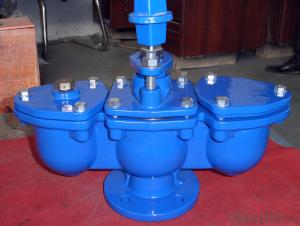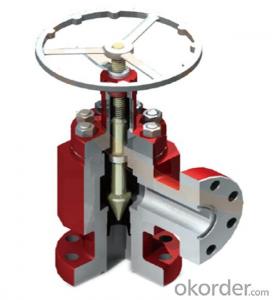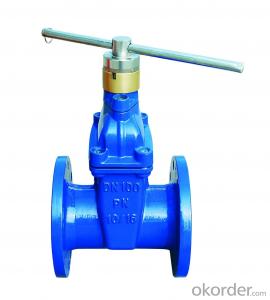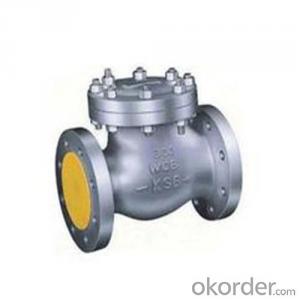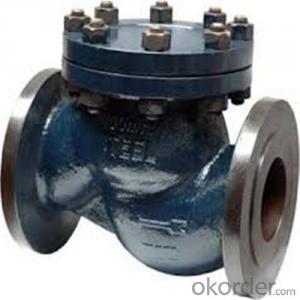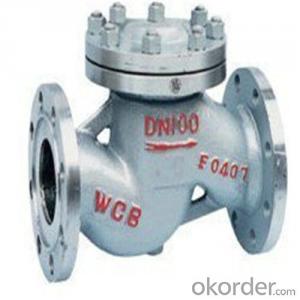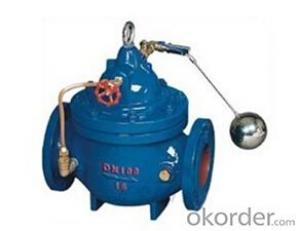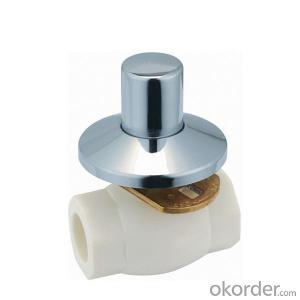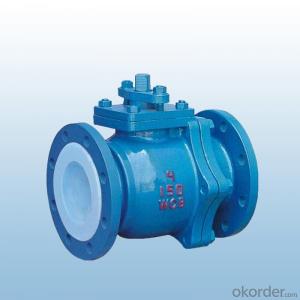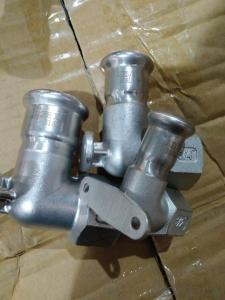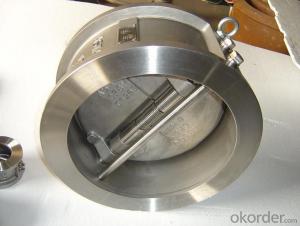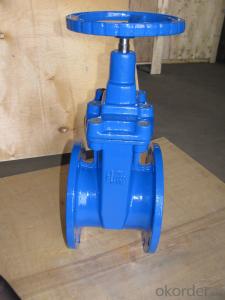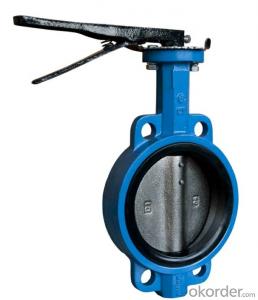High Quality Manual Ball Valve Stainless Stee Ball Valve
- Loading Port:
- Tianjin
- Payment Terms:
- TT OR LC
- Min Order Qty:
- 0 pc
- Supply Capability:
- 50000 pc/month
OKorder Service Pledge
OKorder Financial Service
You Might Also Like
1.Features
The appearance is beautiful.
Material conform to the standard.
Every size produce according to the standard.
2.Specification
1. CF8M/CF8,SS316/SS04,1.4408/1.4301
2. Carbon Steel Ball Valve,with threaded ends ,BSPT,NPT .
3. Applicable media: Water Oil ,Steam, Nitric acid, Acetic acid.
4. Nominal pressure: 1.6. 2.5. 4.0. 6.4Mpa
5. Main size: 1/4" 3/8" 1/2" 3/4" 1" 1-1/4" 1-1/2"2" 2-1/2" 3" 4"
6. Materials of main parts:
7. Valve body: WCB ,CF8, CF8M
8. Stem: 304 316
9. BALL: 304 316
10. Packing: PTFE.
11. Sealing: PTFE
3.Trade Terms
Payment:T/T,30% deposit;70% balance before shipment.
4.Application
Drinking Water Plants
Industrial Water Treatment Plant
Water Softener & Purifier
Water Treatment Plants
Filtration and Sedimentation Units
Flower water treatment
Solar energy water treatment system
Boiler water treatment system
Swimming Pool Filtration Plant, etc.
5.Why Choose us?
1.We are a factory who focus on produce valves for 20years.
Adhere To Quality Is Our Belief.
2.All valves according the drawings to produce and 100% pressure testing,100% material inspection.
3.We use ERP system to improve the work efficiency.
6.Picture
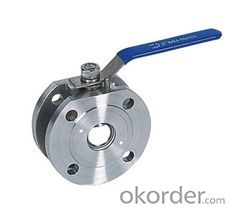
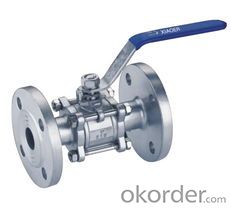
- Q:Friends,is there anyone know about LinX(Linear Exchage)Valve,how they work.thanks in advance
- A valve is a device that regulates the flow of substances (either gases, fluidized solids, slurries, or liquids) by opening, closing, or partially obstructing various passageways. Valves are technically pipe fittings, but usually are discussed separately. Valves are used in a variety of applications including industrial, military, commercial, residential, transportation. Plumbing valves are the most obvious in everyday life, but many more are used. Many valves are controlled manually with a handle attached to the valve stem. If the handle is turned a quarter of a full turn (90°) between operating positions, the valve is called a quarter-turn valve. Butterfly valves, ball valves, and plug valves are often quarter-turn valves. Valves can also be controlled by devices called actuators attached to the stem. They can be electromechanical actuators such as an electric motor or solenoid, pneumatic actuators which are controlled by air pressure, or hydraulic actuators which are controlled by the pressure of a liquid such as oil or water. Actuators can be used for the purposes of automatic control such as in washing machine cycles, remote control such as the use of a centralized control room, or because manual control is too difficult; for example, the valve is huge. Pneumatic actuators and hydraulic actuators need pressurized air or liquid lines to supply the actuator: an inlet line and an outlet line. Pilot valves are valves which are used to control other valves. Pilot valves in the actuator lines control the supply of air or liquid going to the actuators. The fill valve in a commode water tank is a liquid level-actuated valve. When a high water level is reached, a mechanism shuts the valve which fills the tank. In some valve designs, the pressure of the flow fluid itself or pressure difference of the flow fluid between the ports automatically controls flow through the valve. In an open valve, fluid flows in a direction from higher pressure to lower pressure.
- Q:I have mitral valve prolapse and I don't get why only some people get chest pains? and what causes people to get chest pains with M.V.P (mitral valve prolapse), like me. PLEASE HELP!!!!!!!
- Does Mitral Valve Prolapse Hurt
- Q:Hello all,I have a1990,BMW 525i.I bought this car from another guy about year back and drive around 13000 kms.1.Do i need to adjust the valves(both inlet and outlet).2What is the importance of valve adjustment3Does it affect the mileage4.As a regular maintenance for how many kms can i drive without valve adjustmentExpecting your valuable replies.
- Benefits Of Valve Adjustment
- Q:Was wondering if there is something I could purchase to put into a car so that it will become a 24 valve????
- You'll just have to buy a vehicle that has a 24 valve engine man.
- Q:Hi My sons car has alloy wheels, and metal valve stems, there is a tiny leak between the valve stam and the alloy on one wheel, we are struggling to get anyone to repair at a reasonable cost. Would tyre weld make a permanent repair?. Some tyre specialists won't touch the wheel, one other wants to drill out the stem put in another, which sounds a bit drastic. Any other ideas?, is it feasible to get the metal valve stem replaced by a rubber version?. Apparently the metal ones get curbed and then start to leak.
- On that year car the tire is tubeless and the valve stem should not be moving as it would if you had a tube type tire. If the valve stem is pushing in it means you drove on the tire while flat and probably ruined the tire as well as the valve stem. The tire must come off the rim to be inspected before blowing it back up and used. If you don't inspect the tire it will probably blow out at highway speeds and kill someone!
- Q:What are better valve cover gaskets for a car? Cork kind? Or the rubber kind? Or either rubber/cork kind?
- that depends on what shape your valve covers are in. if the sealing flange is good and straight and not bent. then I would use cork as long as you don't over torque the bolts. But if you have a flange that is bent or wrinkled use the rubber ones, they will conform to the shape of the cover and you can tighten them a bit more. if you have a serious leak use the rubber kind. want a little racer trick. take a coke can and cut eight strips out of it that are half as wide as your gasket. place them at the corners of each cover don't go into the corner just up to it. this will help seal the corners better. but I still prefer cork to rubber.
- Q:A friend of mine is having open-heart surgery next week to replace a heart valve. He needs to decide whether he wants a mechanical valve or a biological one. He is 28 years old. Which would you choose and why?
- The answer depends on many things. Which valve? Why is it being replaced? Overall, mechanical valves last longer, typically 20-30 years. The tissue valves tend to last 15-20. There are risks and benefits to each, such as closure efficiency, infection rates, and other types of failure etc. If it were me, I'd go with a mechanical valve. However, he really, really needs to talk seriously with his doc before deciding. The doc will give answers in context to his unique situation. That is something we cannot do on this site, simply because we do not know him or his medical history. Best of luck.
- Q:I experience a quiet ride on a kawasaki vulcan vn 2000 and clicking started at the end sounds like valves ticking sometine like 2 then 1
- I think that bike has hydraulic lash adjusters, should be fairly quiet. How many miles? If it has hydraulic, that is great, it reduces your maintenance to oil changes. First thing to do is have a dealer listen to it. Some bikes are just a little noisier than we would like. Does it have a windshield? This will reflect every sound right back at you. You will hear engine sounds that you would not hear without it.
- Q:Full Bore ball vale and Reduce bore ball valve have diferent with each other ,I want to know about them.
- 1. Ball valves are generally more expensive than butterfly valves. 2. Ball valves use a face seal, butterfly valves (usually) use an edge seal. 3. Ball valves can be rated up to Class 2500 (42.5MPa), butterfly valves are rarely used above Class 150 (2MPa). 4. Ball valves can seal on two faces and can be double block and bleed for positive bubble-tight sealing, butterfly valves have a single seal and can never be assumed to be bubble-tight.
- Q:My husband just found out that one of the heart valves is 100% blocked and the other 3 are 90% or more blocked . He is 78 years old he Is nearly non mobile. What kind of treatment would you suggest?
- A heart valve can't be 100% blocked. The heart simply couldn't function. On the other hand, coronary arteries can be blocked as you described. Normally, 4 vessel disease is treated with bypass surgery. In a high risk patient, angioplasty might be an option. However, if he is not having cardiac symptoms , or if he is thought to be TOO high risk, the option is medical treatment. Sit down for a talk with his cardiologist.
1. Manufacturer Overview |
|
|---|---|
| Location | |
| Year Established | |
| Annual Output Value | |
| Main Markets | |
| Company Certifications | |
2. Manufacturer Certificates |
|
|---|---|
| a) Certification Name | |
| Range | |
| Reference | |
| Validity Period | |
3. Manufacturer Capability |
|
|---|---|
| a)Trade Capacity | |
| Nearest Port | |
| Export Percentage | |
| No.of Employees in Trade Department | |
| Language Spoken: | |
| b)Factory Information | |
| Factory Size: | |
| No. of Production Lines | |
| Contract Manufacturing | |
| Product Price Range | |
Send your message to us
High Quality Manual Ball Valve Stainless Stee Ball Valve
- Loading Port:
- Tianjin
- Payment Terms:
- TT OR LC
- Min Order Qty:
- 0 pc
- Supply Capability:
- 50000 pc/month
OKorder Service Pledge
OKorder Financial Service
Similar products
New products
Hot products
Hot Searches
Related keywords



